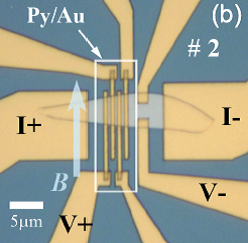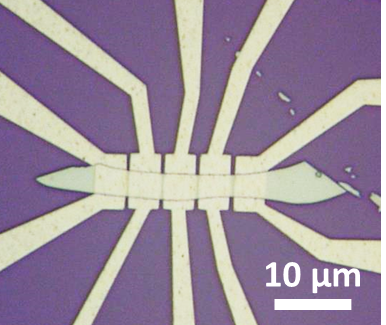The teams comprising the Ando Lab
In the Ando lab, five teams are performing experiments with different main techniques in a complementary manner.
Strong collaborations between the teams make it possible to complete the flow of “Materials synthesis – Characterizations – Device Fabrications – Measurements – Discovery” in a single lab with efficient cross-fertilization between different steps.
Device Team
Many novel phenomena expected for topological matter are fundamentally quantum mechanical and are best probed in the “mesoscopic” world. We therefore employ advanced nanofabrication techniques to make suitable devices to address such topological quantum phenomena occurring at the nano-scale. Our current focus is hybrid nanodevices combining a TI and a superconductor to generate robust Majorana zero-modes and to understand their properties. Measurements of these devices are done at ultra-low temperature down to 10 mK using state-of-the-art instrumentations.
c-QED Team
The main goal of our lab is to confirm the non-Abelian statistics of Majorana zero-modes and to perform the proof of principle of topological quantum computing. This cannot be done without using the technology of superconducting qubits. We employ circuit-QED techniques and conventional transmon qubits for the manipulation and the readout of quantum information encoded in Majorana zero-modes.
MBE Team
Another goal of our lab is to generate chiral Majorana fermions and explore their physics. Chiral Majoranas are fermions and are different from Majorana zero-modes, possessing unusual properties of their own. To address them, we grow quantum anomalous Hall insulators (QAHIs) with the MBE technique and fabricate hybrid devices with a superconductor to locally induce superconductivity in them.
STM Team
We use UHV-STM operating at 400 mK to characterize the hybrid systems of TI and superconductor. By studying nanostructures with STM to investigate the Andreev bound states, we can take a unique look at the mesoscopic superconductivity in such hybrids.

